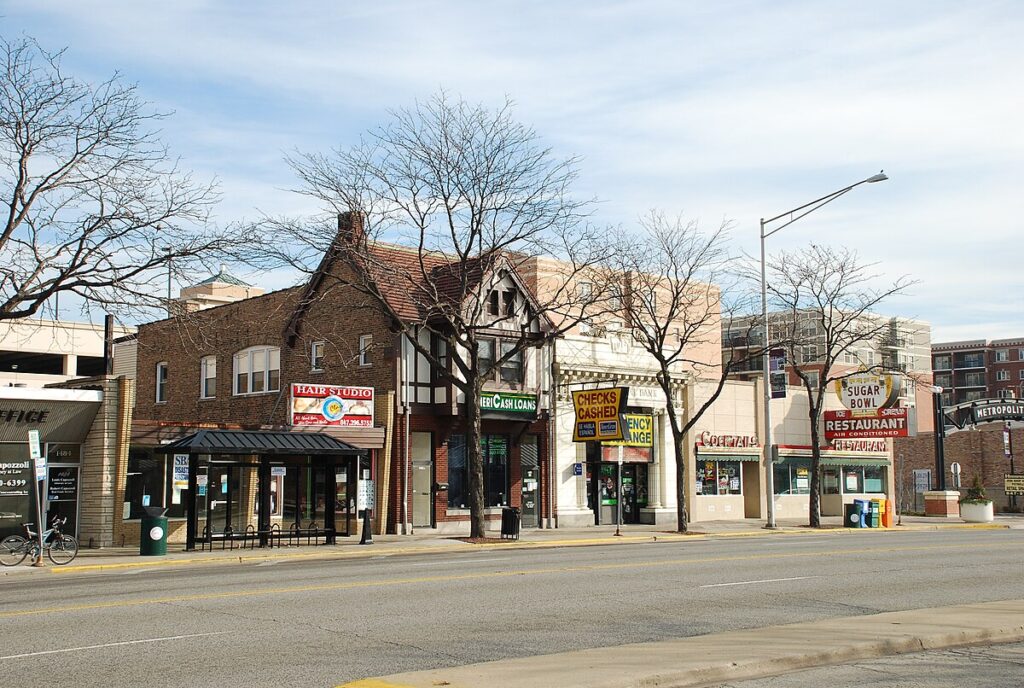
Moving to Des Plaines, Illinois: A Comprehensive Relocation Guide
Considering moving to Des Plaines, Illinois? This diverse Cook County city offers convenient location, O’Hare proximity, and family atmosphere. With approximately 58,000 residents in 2025, Des Plaines combines accessibility with affordability and Northwest Chicagoland’s convenient hub.
Demographic Profile to Consider If Moving to Des Plaines:
Des Plaines’ 2025 population is approximately 58,000 residents in this Cook County city immediately northwest of O’Hare Airport. The median age is around 42 years, with diverse families, professionals, immigrants, and retirees. The population is approximately 54% White, 23% Asian, 18% Hispanic, 3% Black or African American. Des Plaines features diverse neighborhoods, downtown along Miner Street, extensive commercial development, and serves as a transportation hub. The city attracts diverse families seeking O’Hare area employment, immigrants (particularly from Eastern Europe and Asia), and those wanting Northwest suburbs affordability. Des Plaines appeals to working-class to middle-class residents prioritizing location and value. The community balances diversity with maintaining family atmosphere. Find trusted local services for moving, living, and working in Des Plaines.Des Plaines Relocation Directory
Cost of Living to Consider If Moving to Des Plaines:
Des Plaines offers moderate affordability for Cook County. Median home values range from $280,000 to $380,000 in 2025, lower than many Northwest suburbs while providing excellent location near O’Hare and Chicago. The median household income is approximately $72,000. Rental properties average $1,300 to $1,900 monthly. Illinois’ state income tax is flat 4.95%. Property taxes are significant (Cook County). Overall cost of living is competitive for the location, making Des Plaines attractive for airport workers, diverse families, and those seeking Northwest suburbs value. The city provides accessibility with O’Hare proximity. Housing costs create value given the convenient location.
Economy and Job Market:
Des Plaines residents typically work at O’Hare Airport (immediately adjacent), throughout Chicagoland, or at local employers. O’Hare’s massive employment includes airlines, services, and airport operations. Rivers Casino Des Plaines provides gaming employment. Healthcare facilities and retail centers offer jobs. Many residents commute to Chicago or work throughout the Northwest suburbs. The broader Chicagoland economy offers vast opportunities. Typical commute times to Chicago range 30-45 minutes. The O’Hare proximity creates significant employment convenience. Many residents work in aviation, hospitality, healthcare, and services.
Education:
Community Consolidated School District 62 and Maine Township High School District 207 serve Des Plaines students with schools including Maine East High School, Maine South High School, and Maine West High School. School quality varies requiring family research. Oakton Community College provides higher education. The educational infrastructure serves the diverse population with programs supporting multilingual students.
Recreation and Lifestyle:
Des Plaines offers diverse dining reflecting the multicultural population with Eastern European, Asian, and Mexican restaurants. The city maintains parks including Lake Park with lakefront recreation. The Des Plaines River Trail provides paved paths for recreation. The McDonald’s #1 Store Museum preserves fast-food history (first franchised McDonald’s). Residents access Chicago (15 miles) easily for entertainment and cultural attractions. The lifestyle emphasizes diversity, convenient location, family activities, and accessibility. The four-season climate enables year-round recreation. The community values diversity, O’Hare area employment, family atmosphere, and practical living. Living in Des Plaines means accepting airport noise (depending on location), embracing working-class and diverse character, and prioritizing O’Hare proximity and Chicago access while enjoying Northwest suburbs affordability with exceptional location creating convenience for airport workers and commuters.
Healthcare and Services:
Des Plaines residents access comprehensive healthcare through Advocate Lutheran General Hospital (nearby Park Ridge), Presence Resurrection Medical Center, and facilities throughout the Northwest suburbs. The Chicagoland healthcare infrastructure provides quality medical care easily accessible.
Transportation:
Des Plaines benefits from Metra Union Pacific Northwest Line providing direct train service to Chicago, Interstate 90 (Kennedy Expressway), Interstate 294, and various corridors. O’Hare International Airport is immediately adjacent. Pace operates extensive suburban bus routes. CTA Blue Line extends to nearby Rosemont. Most residents use personal vehicles. Typical commute times to Chicago via Metra are 30-40 minutes, by car 25-50 minutes depending on traffic.
Conclusion:
Moving to Des Plaines in 2025 offers convenient Northwest living with O’Hare proximity, diverse community, and Chicago access. The city’s combination of affordable housing, airport employment, and strategic location makes it ideal for airport workers, diverse families, and commuters seeking Northwest Chicagoland’s most convenient hub where O’Hare proximity meets diversity and accessibility defines practical suburban living.

